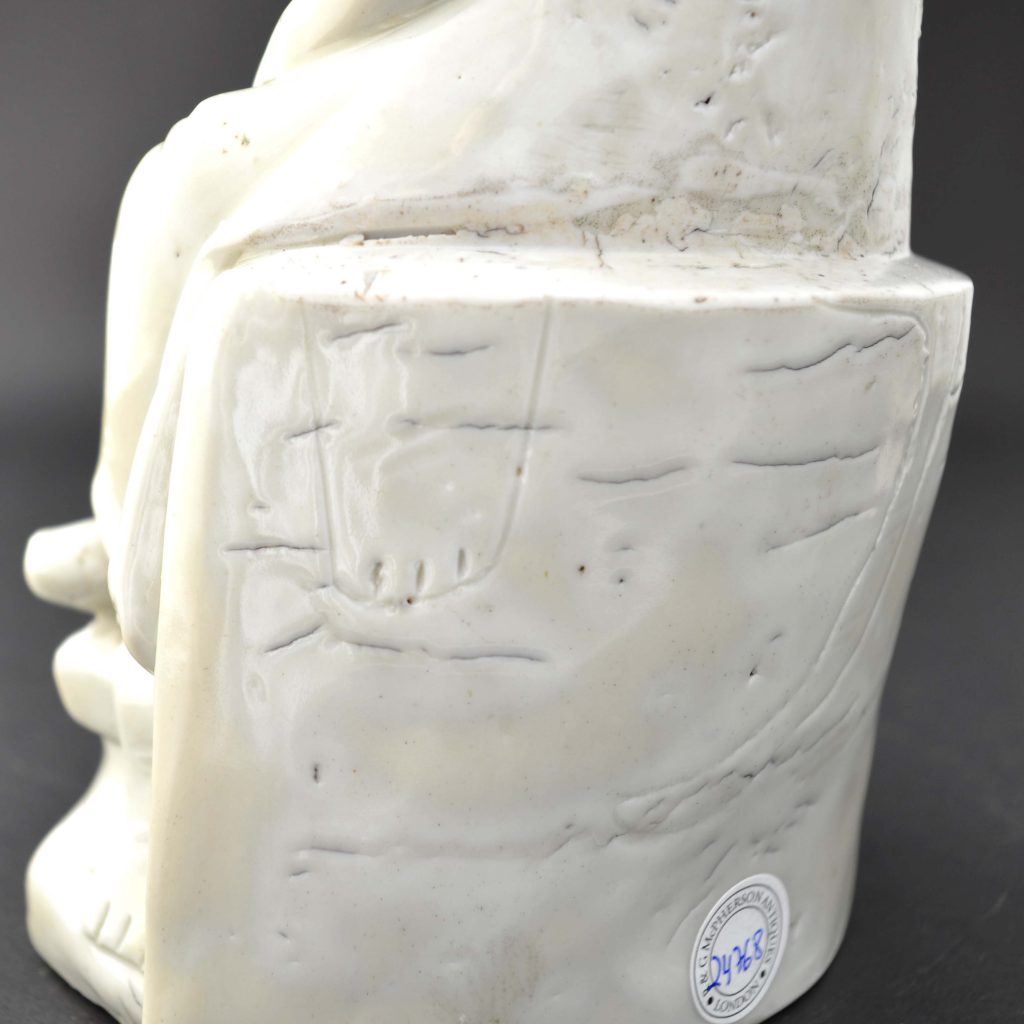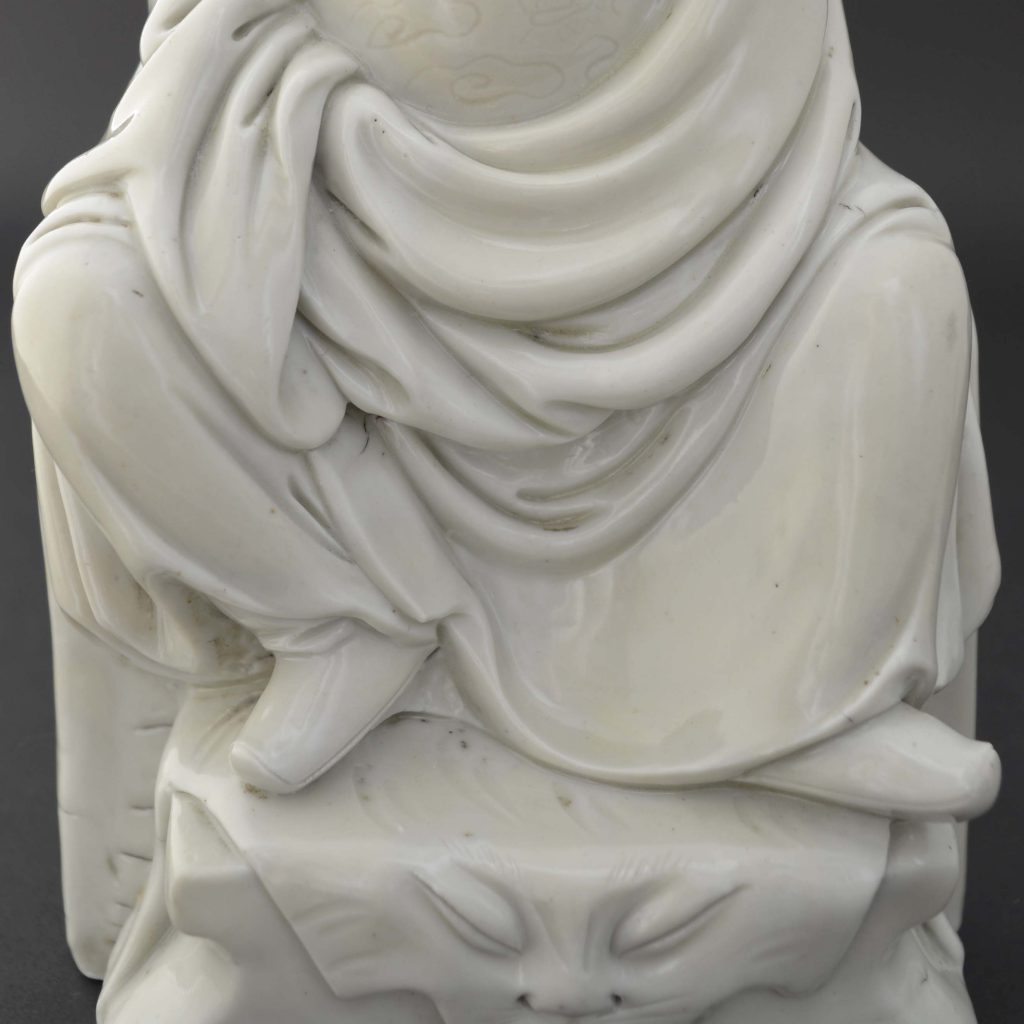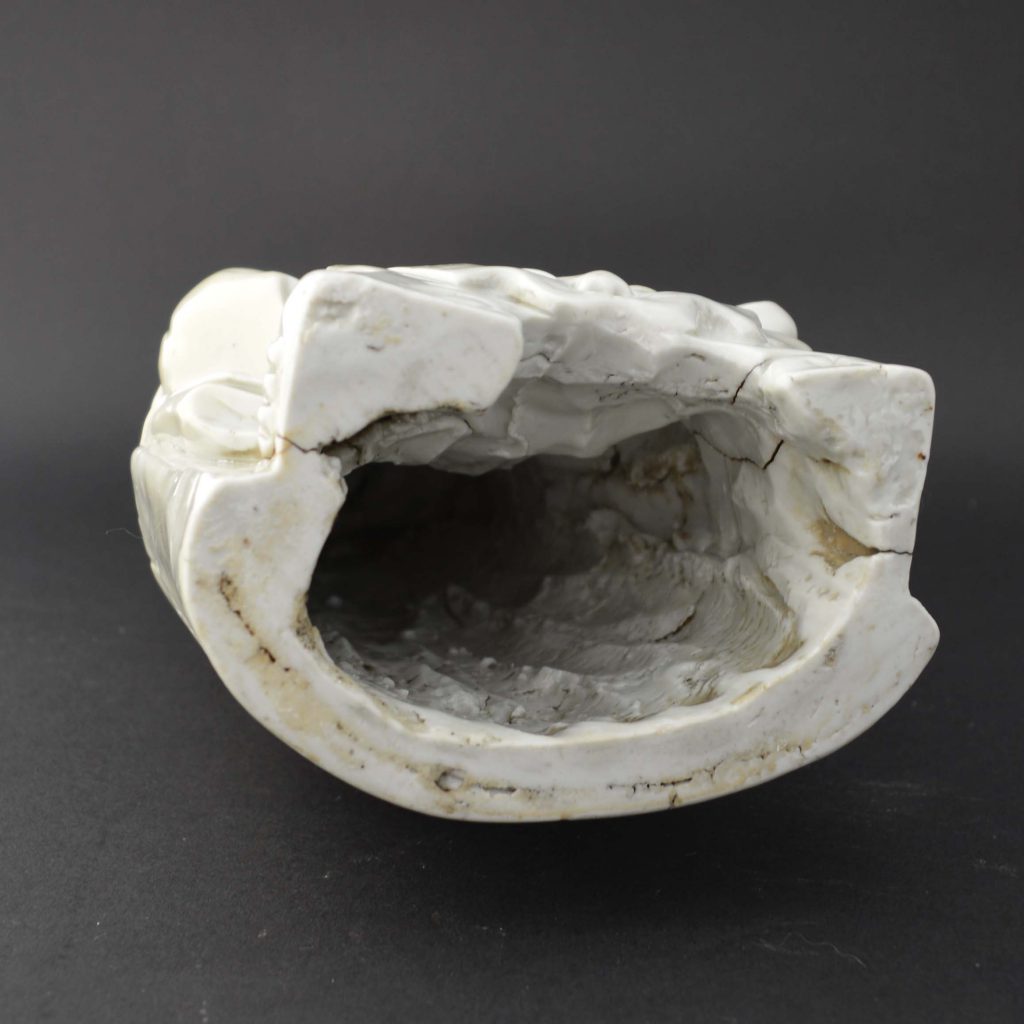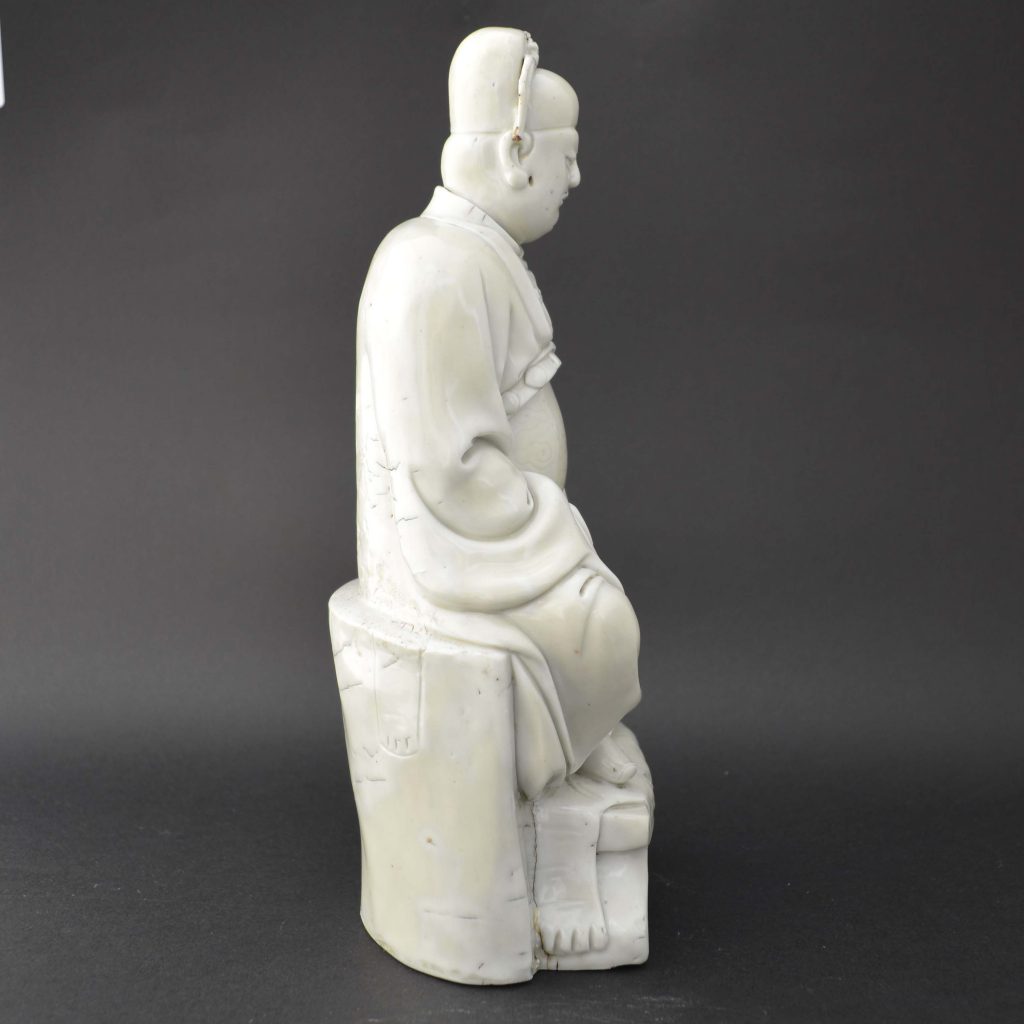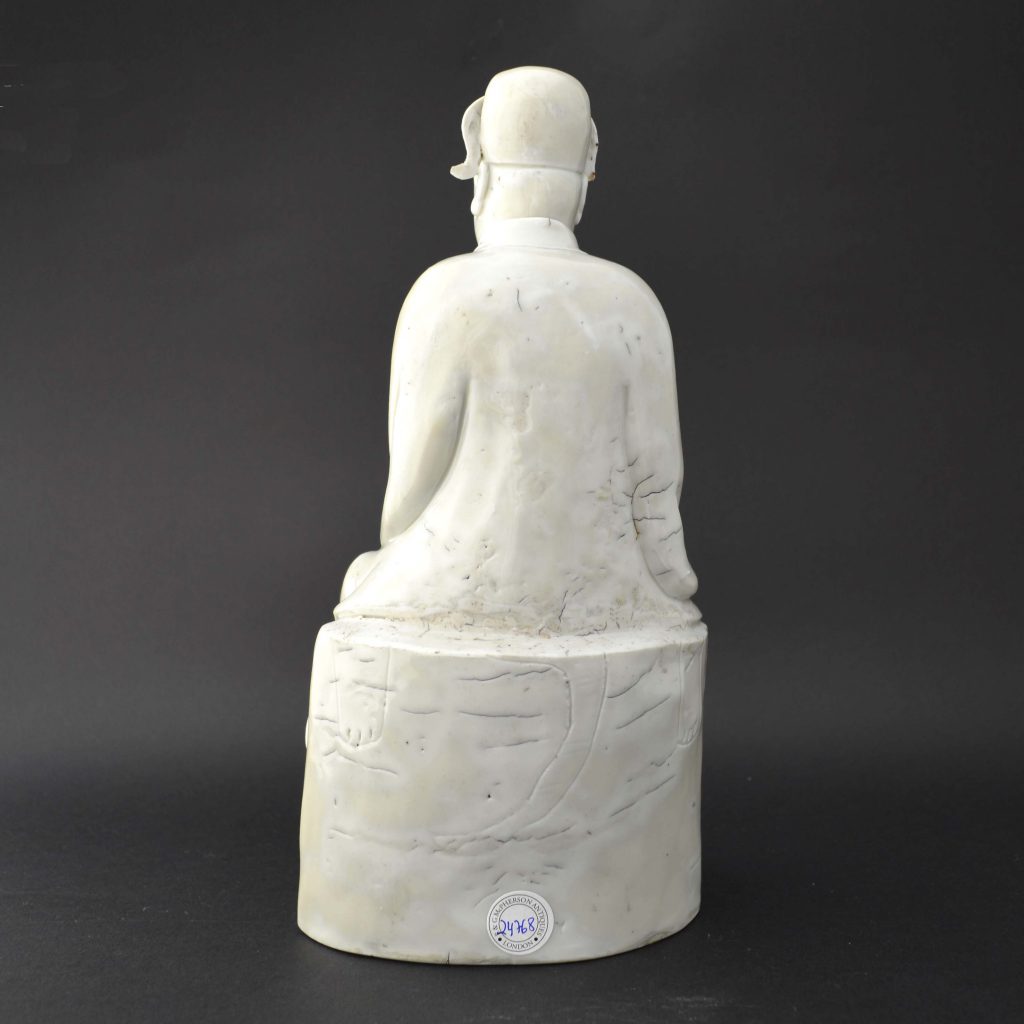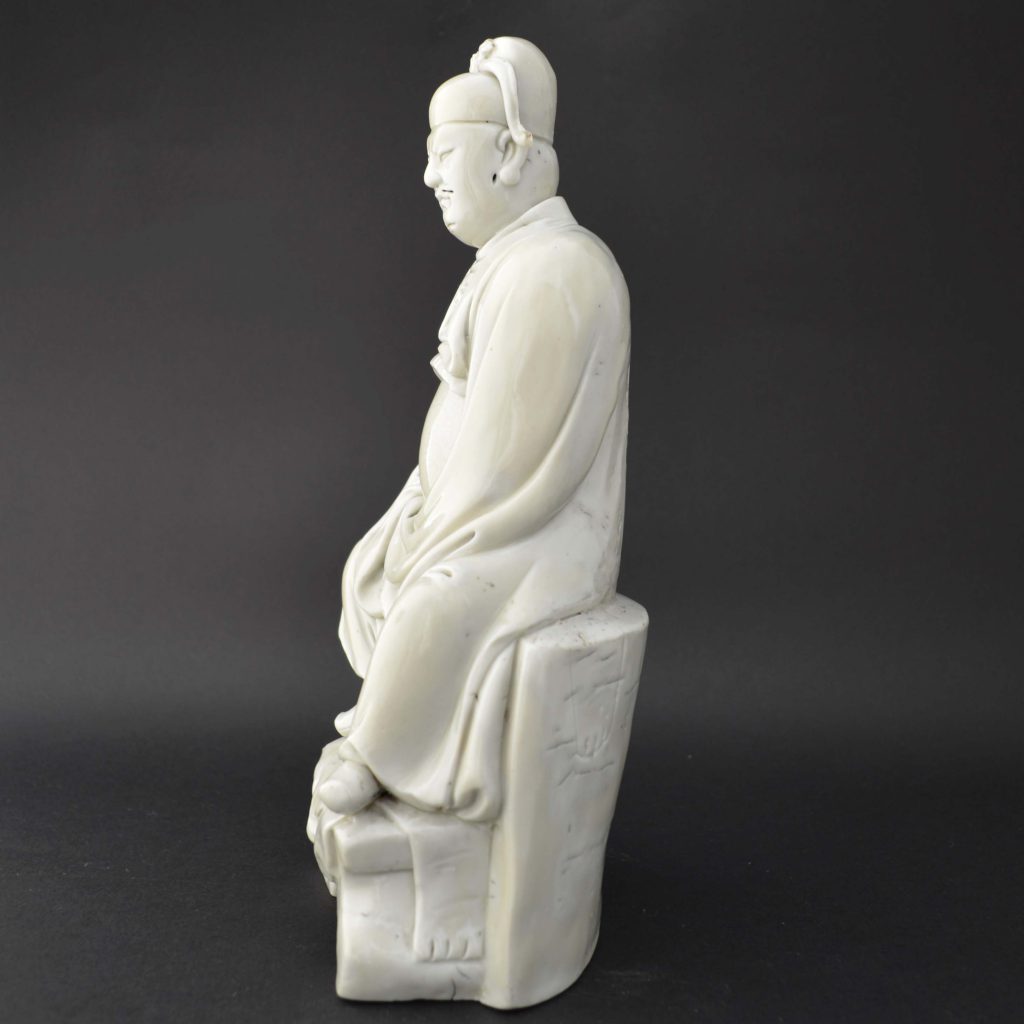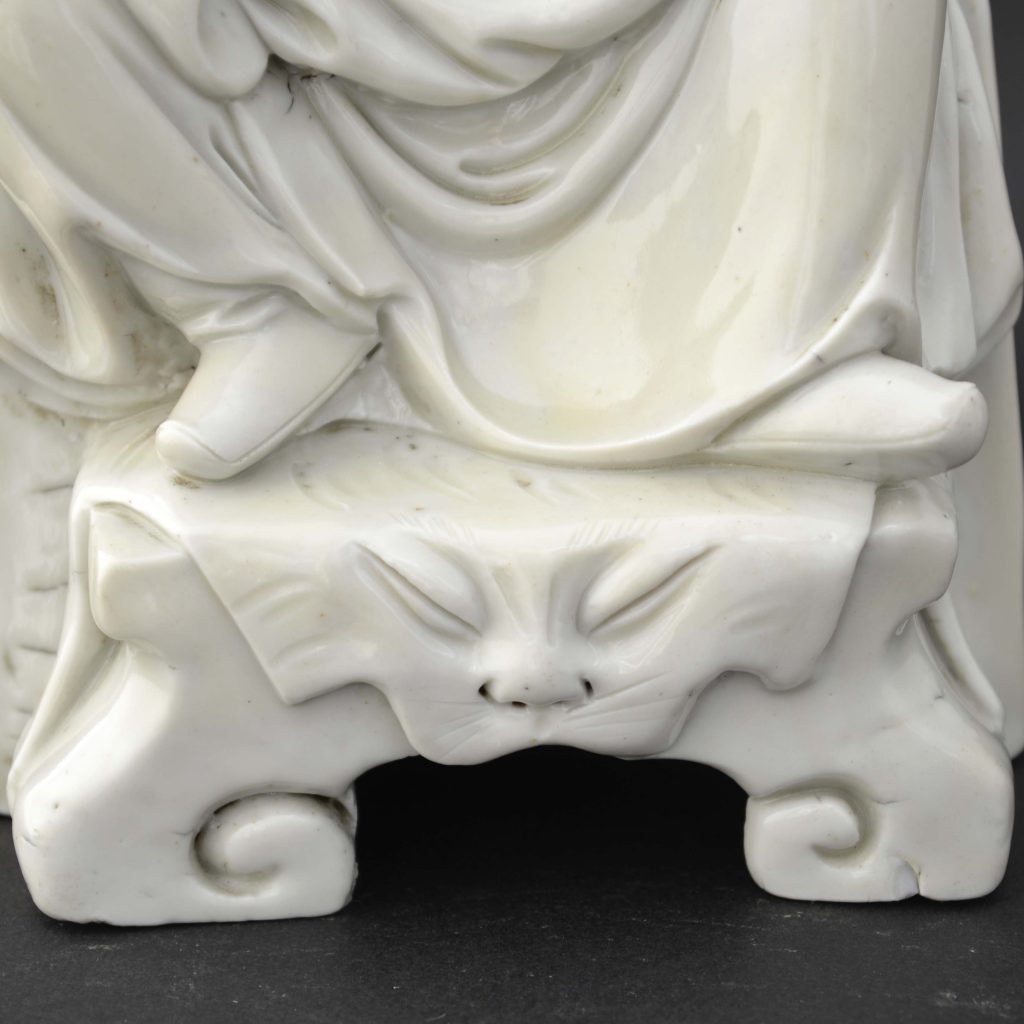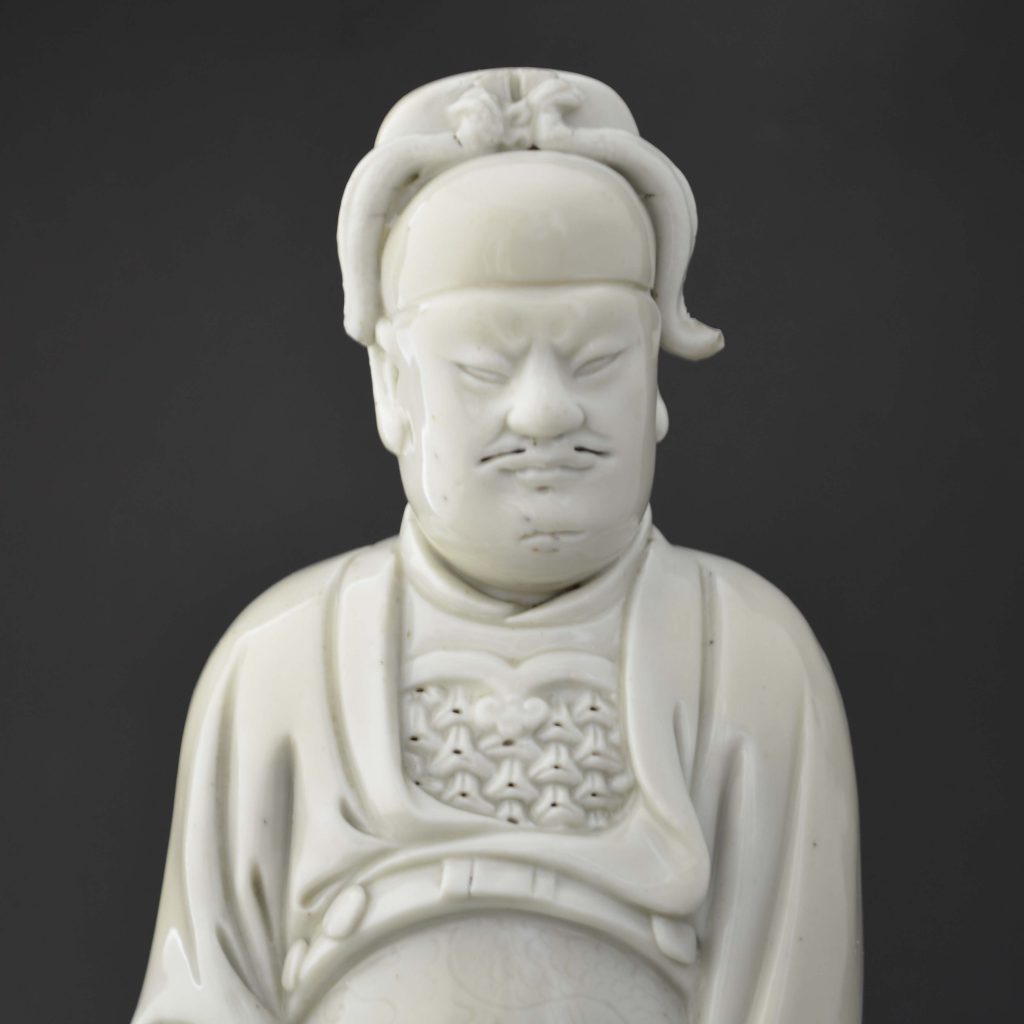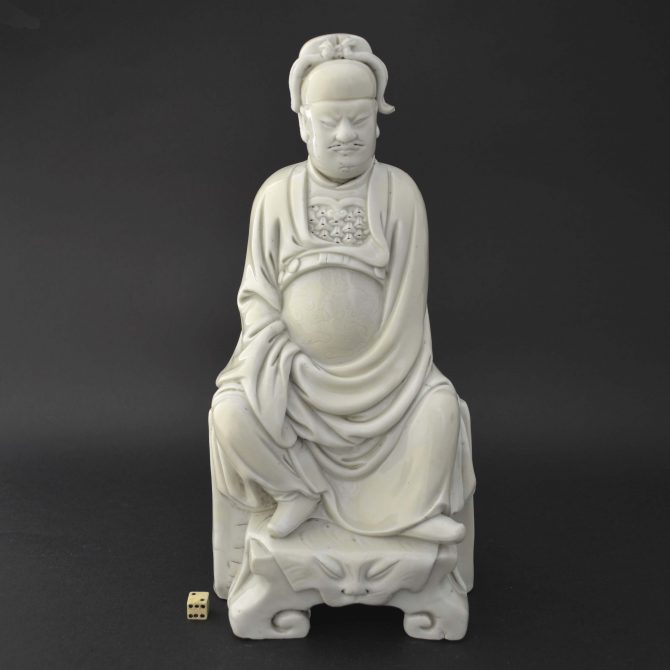
A Fine Ming Blanc de Chine Porcelain Model of Guandi, Transitional Period, Chongzhen 1628 – 1644.
A fine late Ming Blanc de Chine porcelain model of Guandi, Transitional period, Chongzhen 1628-1644. Dressed in armour with his robe covering most of it, Guandi is depicted stern faced on his tiger skin covered throne. Below his high belt is engraved with a dragon among clouds.
SOLD
- Condition
- The back of the figure is missing part of his throne, this has been removed and the surface polished. One side of the ribbon on his hat is missing and the two ribbon ends at the top of his hat are chipped. The back has numerous firing marks.
- Size
- Height : 25 cm (10 inches)
- Provenance
- N/A
- Stock number
- 24768
- References
- For a similar Ming porcelain Blanc de Chine model of Guandi dated to c.1620 -1640 see : Blanc de Chine (Introduction by John Ayers, S.Marchant & Son, 2006. ISBN 0-9554009-0-2) page 43, plate 22.
Information
Blanc de Chine Porcelain :
The porcelain known in the West as Blanc de Chine was produced 300 miles south of the main Chinese kiln complex of Jingdezhen. The term Blanc de Chine refers to the fine grain white porcelain made at the kilns situated near Dehua in the coastal province of Fujian, these kilns also produced other types of porcelain. A rather freely painted blue and white ware, porcelain with brightly coloured `Swatow` type enamels as well as pieces with a brown iron-rich glaze. However it is the white blanc de Chine wares that have made these kilns famous. The quality and colour achieved by the Dehua potters was partly due to the local porcelain stone, it was unusually pure and was used without kaolin being added. This, combined with a low iron content and other chemical factors within the body as well as the glaze, enabled the potters to produce superb ivory-white Blanc de Chine porcelain.
Guandi God of War :
Guan Yu, an important historical general and hero of the Three Kingdoms Period (221–280). Guan Yu is also known as `Guandi God of War`. He is described as having Gleaming skin, glistening lips, eyes like the crimson phoenix, brows like nestling silk worms. His horse was called Red Hare and could cover 1,000 `li` (540 km/330 miles) in a day. Guan Yu was Immortalised in the 14th Century Ming Novel by Luo Guanzhong San Guo Yan Yi (Romance of the Three Kingdoms).
The Transitional Period :
The roots of this unsettled period starts during the later part of Wanli`s reign (1573-1620). At the begging of his reign China was doing very well, new crops from the Americas such as peanuts, maize and sweet potatoes increased food production, while simplified taxes helped the state run smoothly. But this was not due to Wanli`s enlightened reign, but to his Mother championing a man that was to become the Ming dynasties most able minister, Zhang Zhuzheng (1525—1583). Wanli became resentful of Zhuzheng`s control but upon his death became withdrawn from court life. Between 1589 to 1615 he didn`t appear at imperial audiences, leaving a power vacuum that was filled by squabbling ministers. Mongols from the North raided as Japan invaded Korea. Wanli re-opened the silver mines and imposed new taxes but the money was lost due to corruption, as well as being frittered away by the indulgent Emperor himself . The next emperor of Ming China, Tianqi (1621-1627), was bought up in this self indulgent disorganised environment, at the very young age 15 his short reign started. He didn`t stand a chance. Tianqi made the mistake of entrusting eunuch Wei Zhongxian (1568-1627) who Anna Paludan in her excellent book "Chronicle of the Chinese Emperors" (Thames and Hudson, 1998) describes as "a gangster of the first order". Tianqi was deemed to have lost the Mandate of heaven by the Ming people. Tianqi`s younger brother, the last of the Ming Emperors, Chongzhen (1628-1644), was not able to save the situation. The systems of administration had broken down, corruption was rife and so when a sever famine broke out in 1628 nothing much could be done. Anna Paludan describes the tragic end to the great Ming Dynasty "The final drama was worthy of a Greek tragedy. The emperor called a last council in which `all were silent and many wept`, the imperial troops fled or surrendered, and the emperor, after helping his two sons escape in disguise, got drunk and rushed through the palace ordering the women to kill themselves. The empress and Tianqi`s widow committed suicide; the emperor hacked off the arm of one daughter before killing her sister and the concubines. At dawn he laid his dragon robe aside and dressed in purple and yellow, with one foot bare, climbed the hill behind the now silent palace and hanged himself on a locust tree". The Great Wall of China, started 2,000 years ago was built to protect China from the Northern barbarian hoards, it was often tested and sometimes failed. The Jin people invaded China, ruling the North between 1115 and 1234, it was their descendants the Manchus, Jurchens from south east Manchuria that took full advantage of the problems of the Ming dynasty. In 1636 they adopted a Chinese dynastic name, the `Great Qing` (Qing meaning pure). The first of the Qing emperors was Shunzhi (1644-1661) but for most of his reign his uncle ran the state. War raged on during this period and it wasn`t until the second Qing emperor Kangxi (1662-1722) that true peace was achieved. Kangxi was a wise and educated man, he became a highly successful emperor bringing China a long period of wealth and stability.
